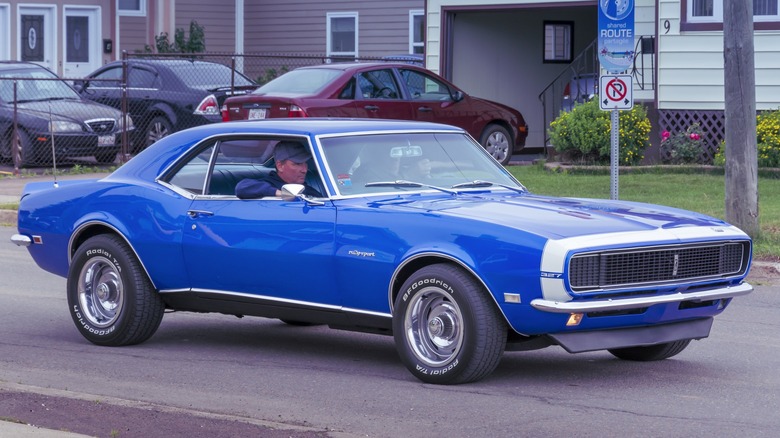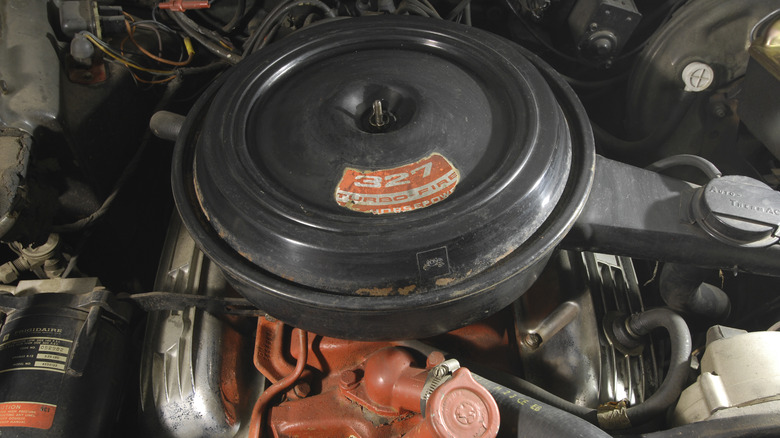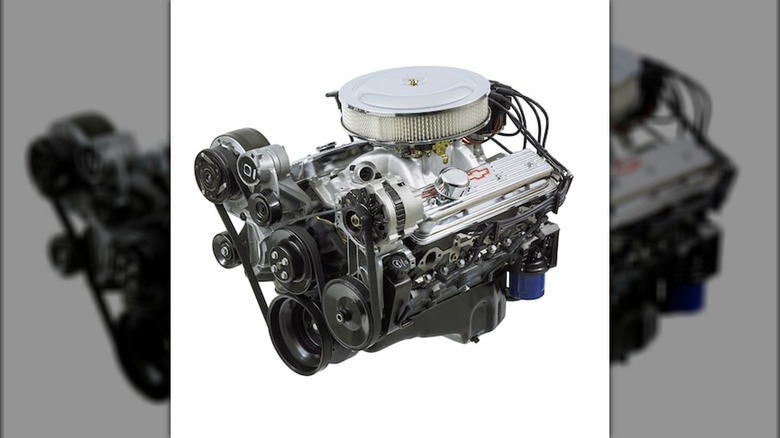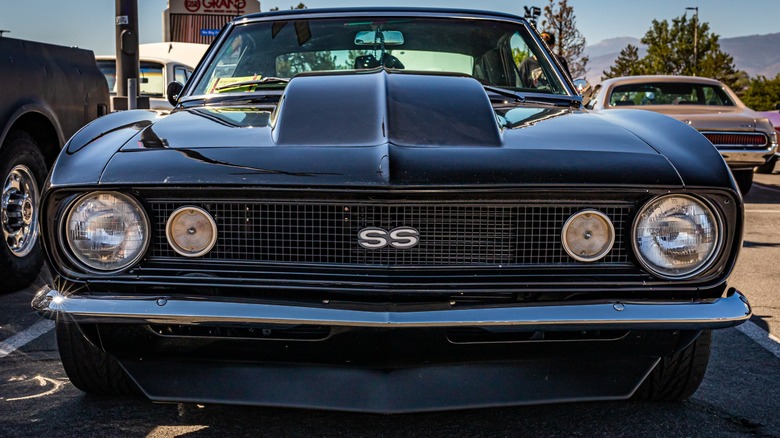Chevrolet 327 Vs 350: Which Is The Better Engine?
Comparing the 327 and 350 small block engines from Chevrolet is a little like comparing your grandfather to your dad. While the older version was strong and capable for its time, the newer version enjoyed advances from knowledge gained over time and improved technology.
The first V8 Chevy small block (SBC), introduced in 1955, displaced 265 cubic inches, or 4.3 liters if you prefer. Dubbed the Turbo-Fire, the predecessor for every SBC to come featured the familiar 4.40-inch cylinder spacing and relatively lightweight thin-wall cast iron block.
The 265 cubic inch Turbo-Fire, with 3.75-inch cylinder bores and a 3.00-inch crankshaft stroke, made 162 horsepower and 257 lb-ft of torque in base form. The base 265 was an option in the 1955 Chevy Bel Air, while the 1955 Corvette's 265 made up to 195 horsepower.
For 1957, Chevrolet increased the 265's cylinder bore diameters to 3.875 inches but kept the same crankshaft to create the 283-cubic inch SBC V8 with 185 horsepower in base form. The 265's thin cylinder walls, made thinner by the 283's increased cylinder bore diameters, led to overheating issues. Chevrolet engine designers solved the problem by creating castings with thicker cylinder walls. The list of SBC improvements continued over the next several years, as Chevy added the 327 and the 350 to its engine offerings in 1962 and 1967, respectively.
What is a Chevrolet 327?
Chevrolet introduced its 327 cubic inch small block as an option for its full-size cars and station wagons for the 1962 model year. To create the 327, Chevy used the same small block design based on the 4.40-inch cylinder spacing as previous SBC engines. However, engineers increased the cylinder bore diameters to 4.00 inches and used a new crankshaft with a longer, 3.25-inch stroke. The base 327 made 210 horsepower using a two-barrel carburetor and an exhaust system that forced both cylinder bank exhaust manifolds into a single restrictive pipe.
Other versions of the 327-cubic inch SBC with 250-, 300-, and 340-horsepower ratings were used in Chevrolet vehicles such as Malibu, Impala, El Camino, Chevelle, and Chevy II between 1962 and its discontinuance from production usage in 1969. These 327 versions used 10.5:1 or 11.25:1 compression ratios, four-barrel carburetors, and free-flowing dual-exhaust systems to achieve horsepower gains and up to 360 lb-ft of torque.
From 1962 to 1965, Chevrolet produced the highest-horsepower 327 engines for the Corvette. Those performance-oriented 327 versions produced between 365 and 375 horsepower, depending largely on which rating Chevrolet felt would sell more cars and the type of fuel induction system they used: Holley four-barrel carburetors or Rochester fuel injection. For example, the 1964/1965 Corvette 327 used 2.02-inch diameter intake valves (compared to the 1.94-inch intake valves used previously). However, it was still rated at the maximum 375 when equipped with the Rochester fuel injection system or 365 horsepower with the Holley four-barrel carburetor.
Chevrolet 350 small block
For the 1967 model year, Chevrolet introduced the Camaro and 350 cubic inch small block V8 engine. While the Camaro was an entirely new model, the 350 owed its roots to the 327 it would eventually replace. The new 350 used the same engine block as other SBC engines, with 4.40 inches between cylinder centers. It also used the same 4.00-inch cylinder bore diameter and 5.7-inch connecting rod length. However, the 350 used a crankshaft with a longer 3.48-inch stroke to gain 23 cubic inches over the 327.
The first 350 SBC iteration, a high-performance option for the 1967 Camaro, made 295 horsepower and 380 lb-ft of torque. Over the years, the 350's power fluctuated from the early 1970s LT-1's 370 horsepower rating to a low of 145 horsepower later in the 1970s following the fuel crisis.
The 350 SBC's most significant impact is its versatility and reliability. For five decades, it served as the base engine for many models, and the high-performance option in some of Chevrolet's most revered performance cars placed it in a class not acquired by most engine platforms. The fact that Chevrolet still sells its 350 SBC as a crate engine is a testament to its popularity.
Between the 327 and 350, which SBC engine is better?
All things considered, the 350 SBC surpasses the 327 due to its longevity and versatility. While the 327 made a significant impact on SBC performance, especially its 375 horsepower versions, it only remained a viable option for car buyers for eight years. Still, many Chevy fans will argue the merits of the 327 with its high-revving horsepower curve. The 327's groundbreaking performance (for its time) and the fact that it was the precursor of the 350 earns it a certain reverence for some people.
The 327's cult-like following aside, the Chevrolet 350 small block made nearly as much horsepower as the 327 at lower rpm and provided the basis for even more horsepower gains as the SBC platform progressed.
The bottom line? If you were forced to choose between the two and could never change your mind, finding a 327 to rebuild would prove difficult, but SBC 350s are everywhere.



